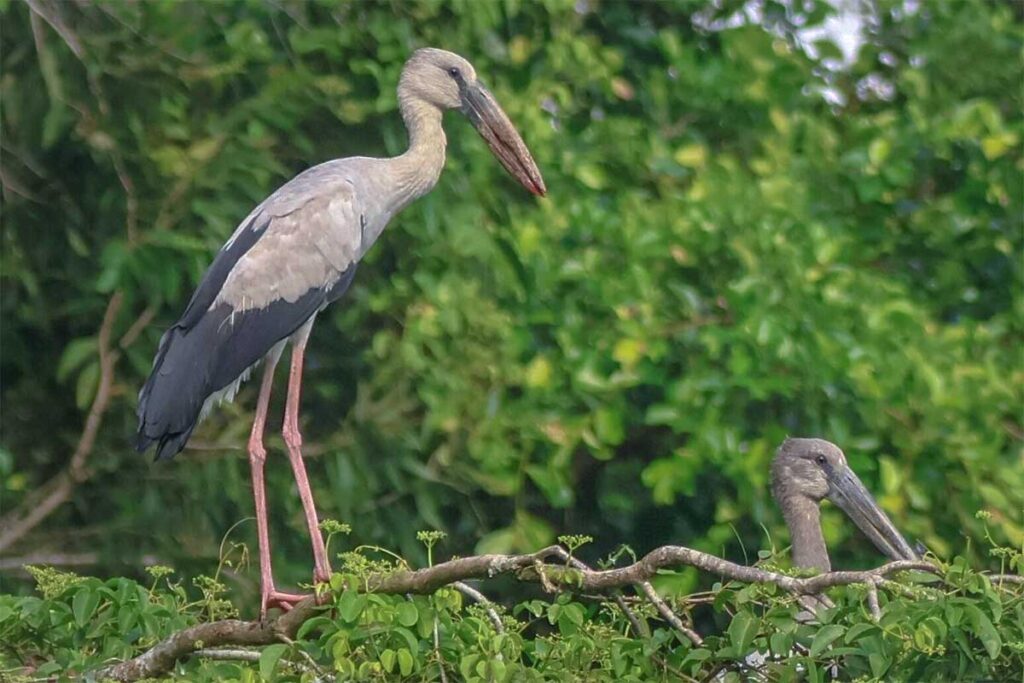What is Lung Ngoc Hoang Nature Reserve?
Lung Ngoc Hoang is one of the few large wetland reserves left in the Mekong Delta. It isn’t as famous as Tram Chim or Tra Su, but that also means fewer tour buses and more of a calm, local feel. For travelers curious about Hau Giang province, it gives a glimpse of the flooded forests and bird habitats that once covered much more of southern Vietnam.
Location & Landscape
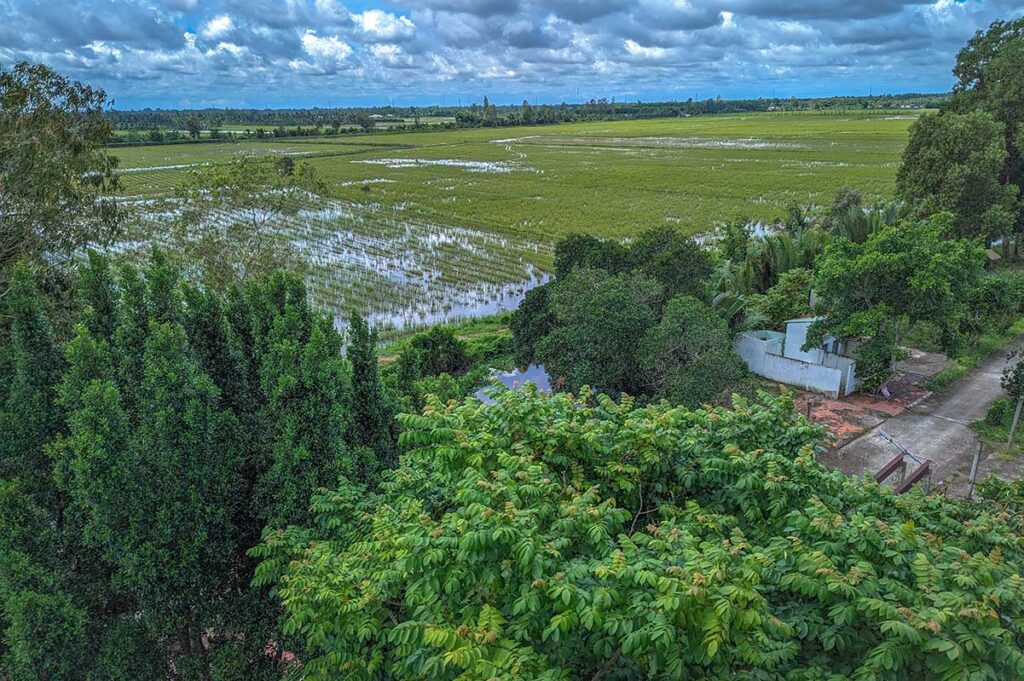
The reserve is located in Phung Hiep District, Hau Giang Province, about 40 km from Can Tho. Its landscape is a mix of melaleuca (tràm) forests, winding canals, and seasonally flooded wetlands. Depending on the time of year, the water is either carpeted with duckweed and water lettuce or drier with visible channels. The scenery isn’t dramatic, but it does feel immersive, especially when you’re gliding quietly by boat.
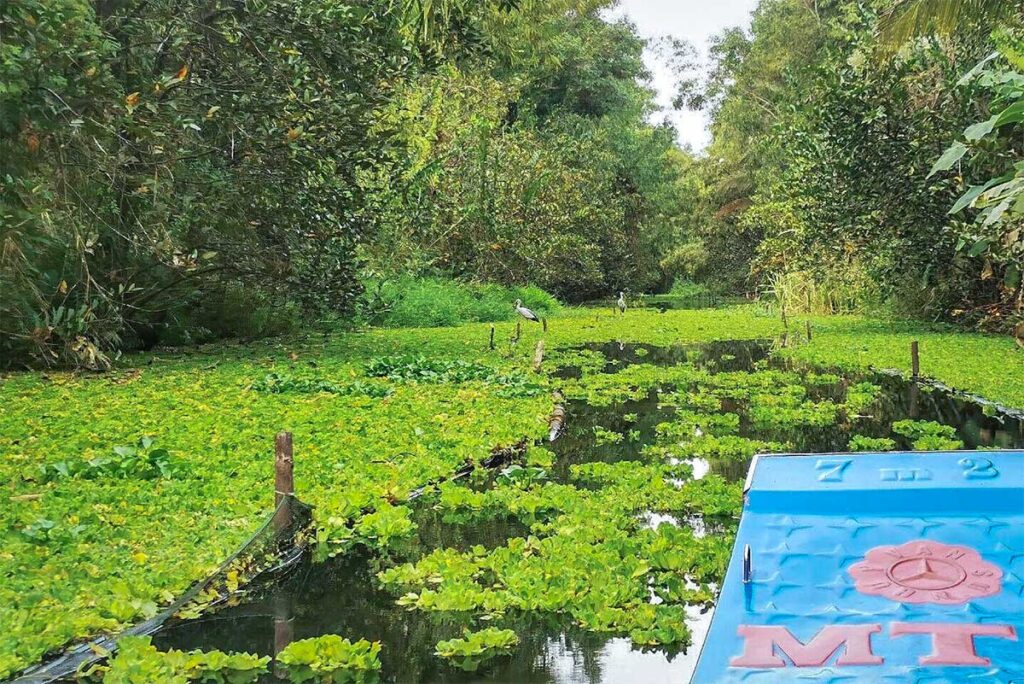
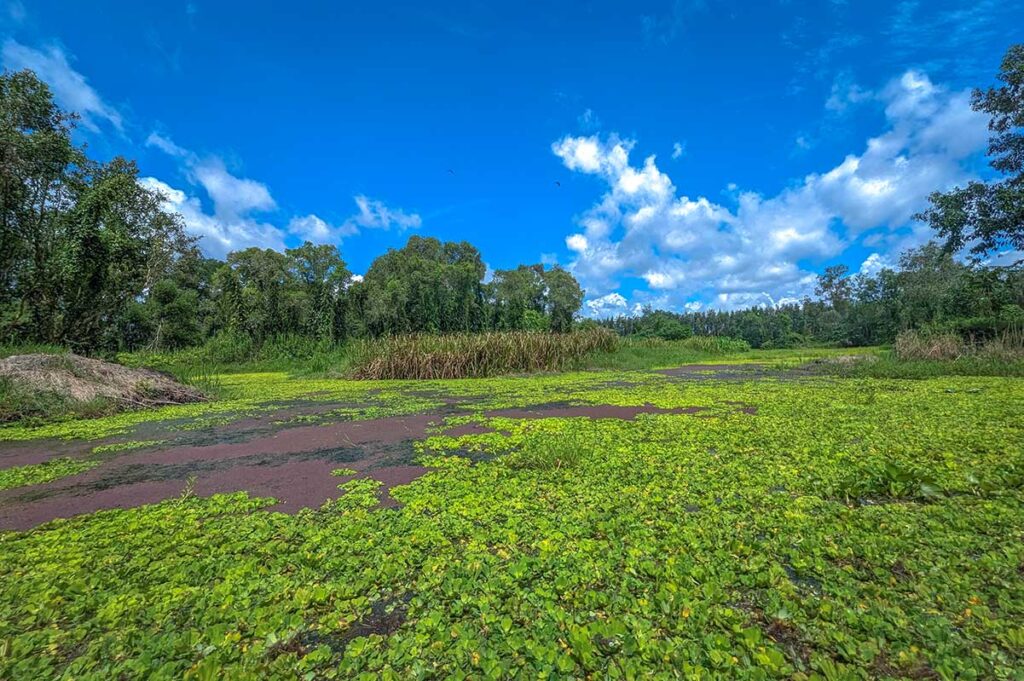
Size & Zoning
The protected core covers around 2,800 hectares, divided into three official zones: a strictly protected area, a restoration area, and a small administrative/tourism zone. A much larger rural buffer surrounds the reserve, where farmers still live and work. This setup means you can see both the natural wetlands and, just outside, the daily life of the Mekong countryside.
Biodiversity snapshot
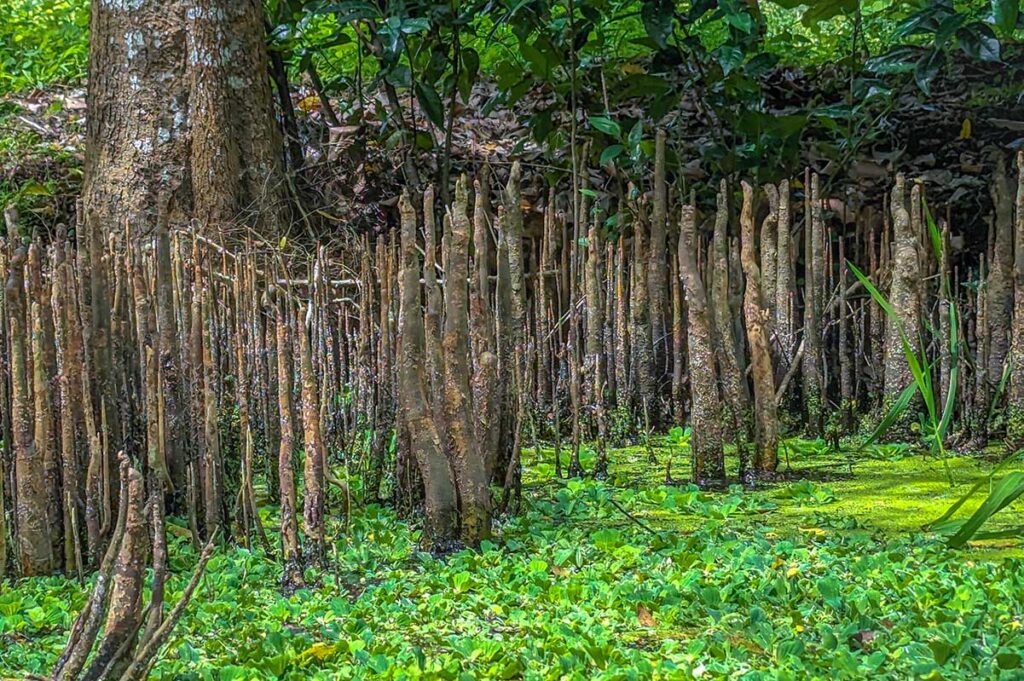
Lung Ngoc Hoang is home to over 300 plant species, with melaleuca dominating the canopy and aquatic plants filling the canals. For visitors, the highlight is usually the birdlife: storks, herons, openbills, and other waterbirds are regularly spotted, especially in the mornings and late afternoons.
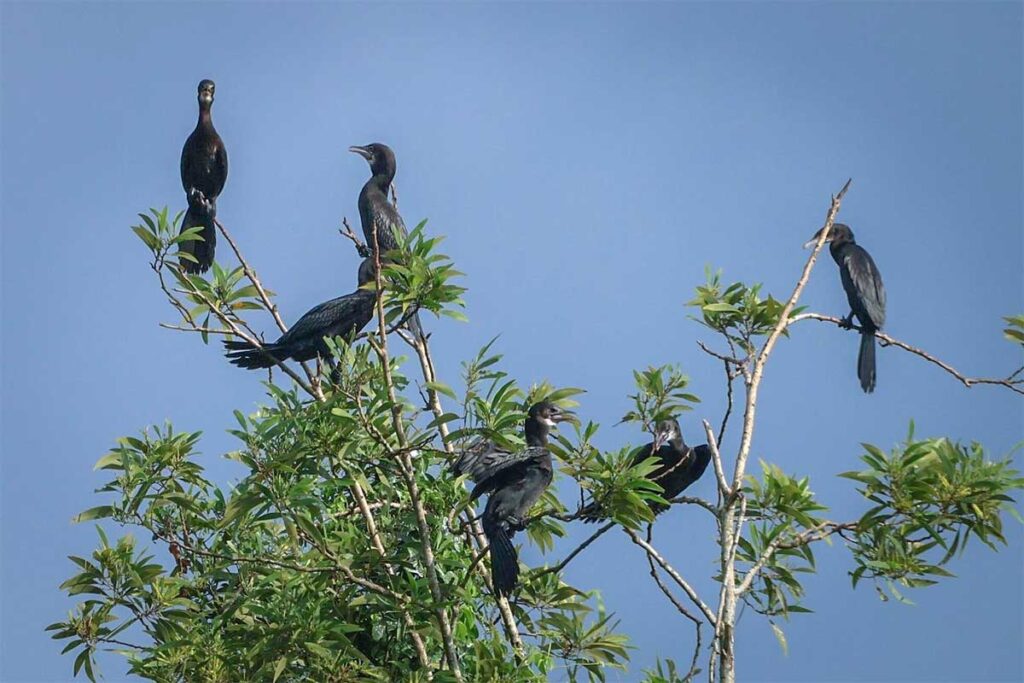
The reserve also supports reptiles, amphibians, and around 70 fish species typical of the Delta. You won’t always see rare wildlife on a casual visit, but the sheer variety of habitats makes the area important for conservation.
History & Conservation
This wetland has gone through different phases. In the past, it was used for fishing and small-scale farming, then became a wartime base during Vietnam’s struggles in the mid-20th century. Later, parts of it were managed for forestry and aquaculture before being declared a nature reserve in the early 2000s. Today, Lung Ngoc Hoang sits in a middle ground: it is protected but also slowly opening for eco-tourism. Infrastructure is still basic, so don’t expect polished facilities, but that’s part of why it feels more authentic compared to busier sites.
Highlights of visiting Lung Ngoc Hoang Nature Reserve
1. Quiet boat ride through emerald canals
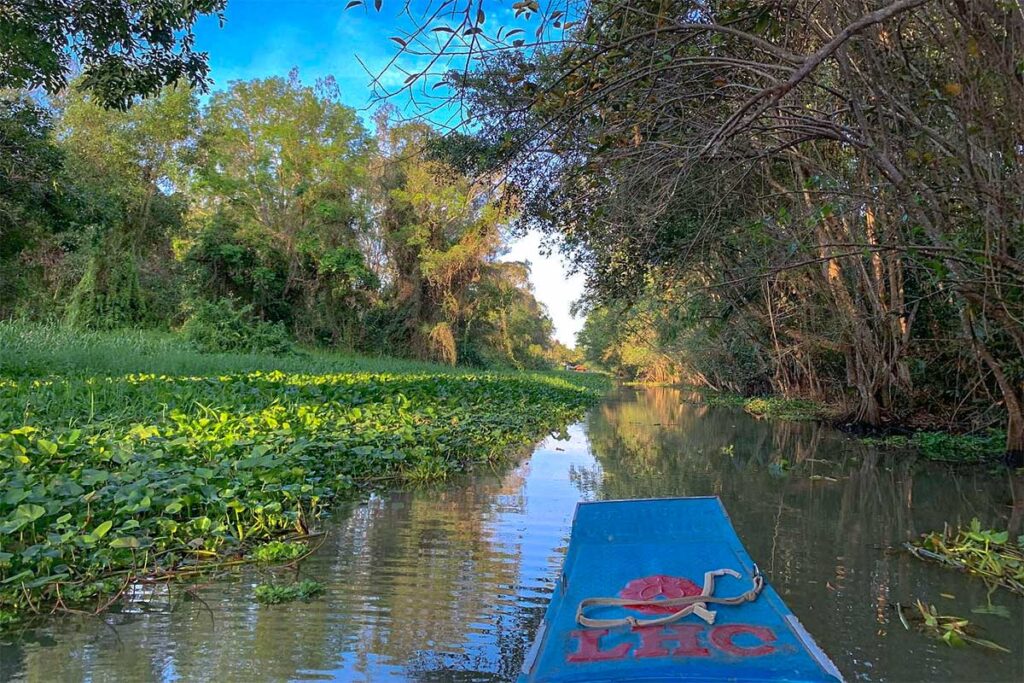
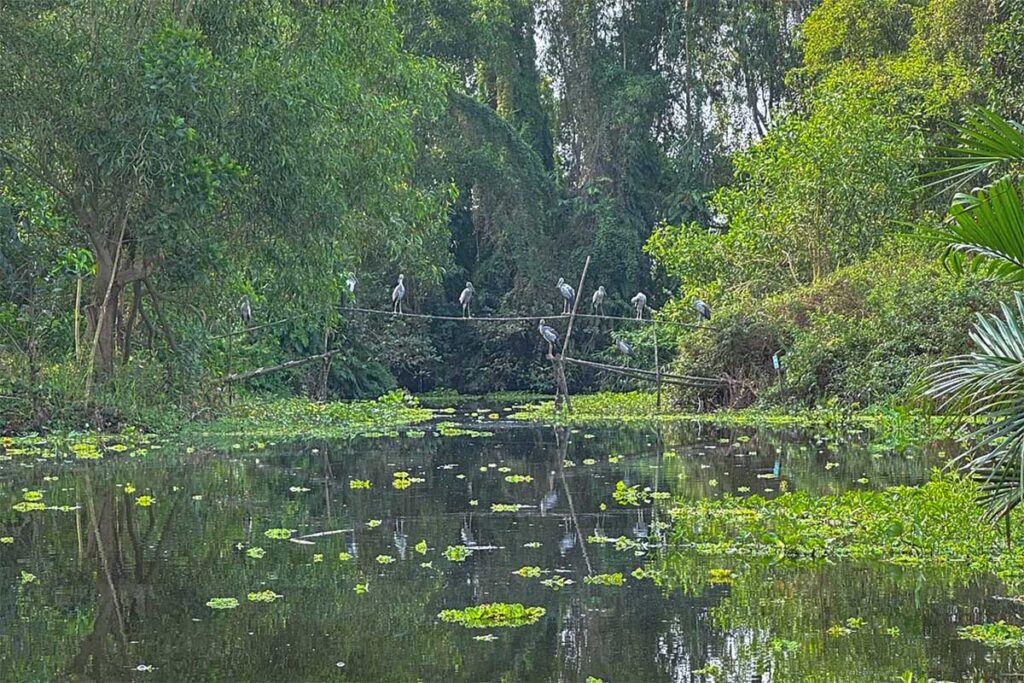
The main experience at Lung Ngoc Hoang is drifting along its narrow canals by sampan or motor-boat. In the wet months, the surface is often covered with duckweed and water lettuce, creating a soft green “carpet” that makes the ride especially atmospheric. It’s slow and peaceful rather than thrilling, but that’s part of the charm.
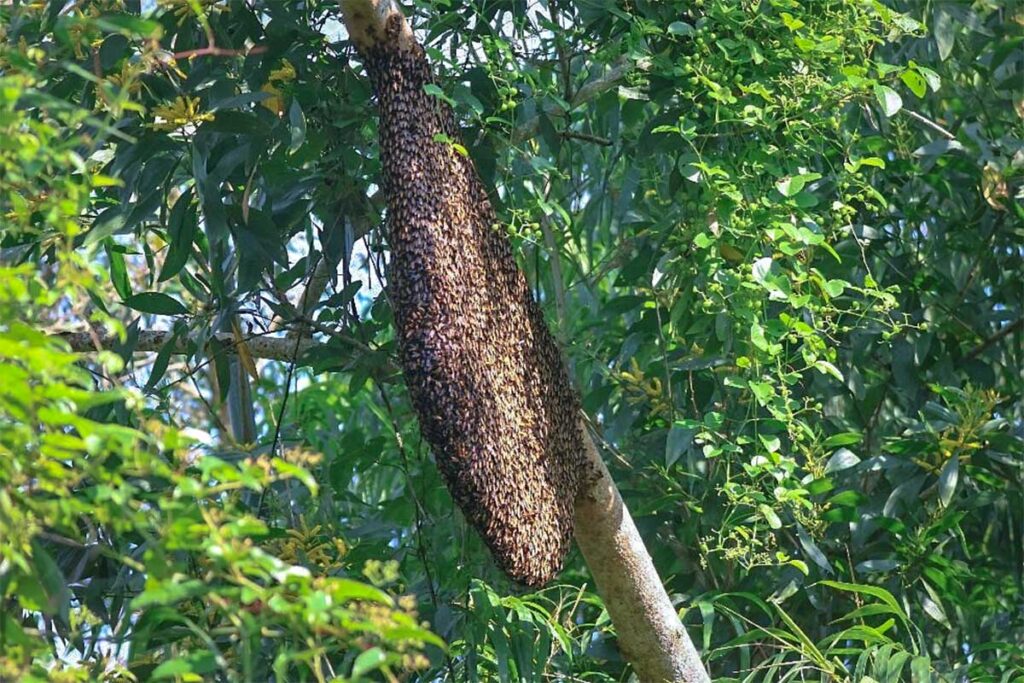
Keep an eye out for large bee hives hanging from tree branches, a reminder that this area is also an important source of wild honey.
2. Birdwatching from the 21-m observation tower
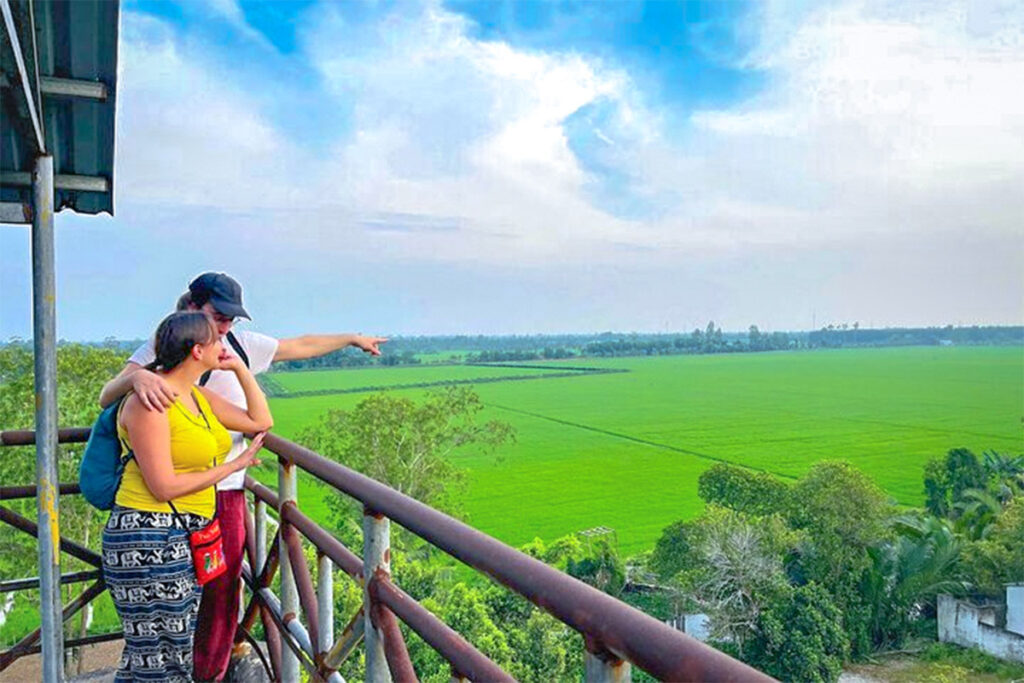
A tall observation tower stands in the heart of the reserve, giving panoramic views over the melaleuca forest and surrounding wetlands. It’s the best spot to get a sense of the scale of the area and to watch birdlife from above. Early mornings and late afternoons are the most rewarding, when the light is softer and flocks of storks and herons are more active.
3. Light forest walk
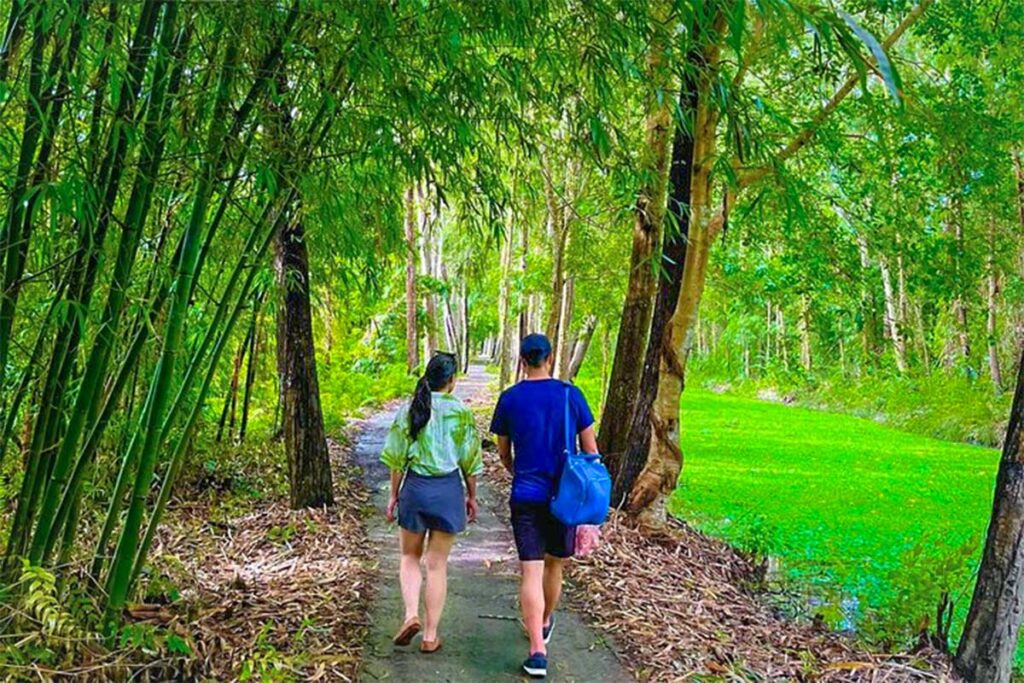
Most of the visit is on water, but there are also short paths and boardwalk-style tracks inside the reserve. These walks aren’t long or difficult, but they add variety and let you experience the forest up close. Expect basic infrastructure rather than polished eco-trails — it’s enough for a quiet wander but not a full hike.
4. Seasonal color & photography
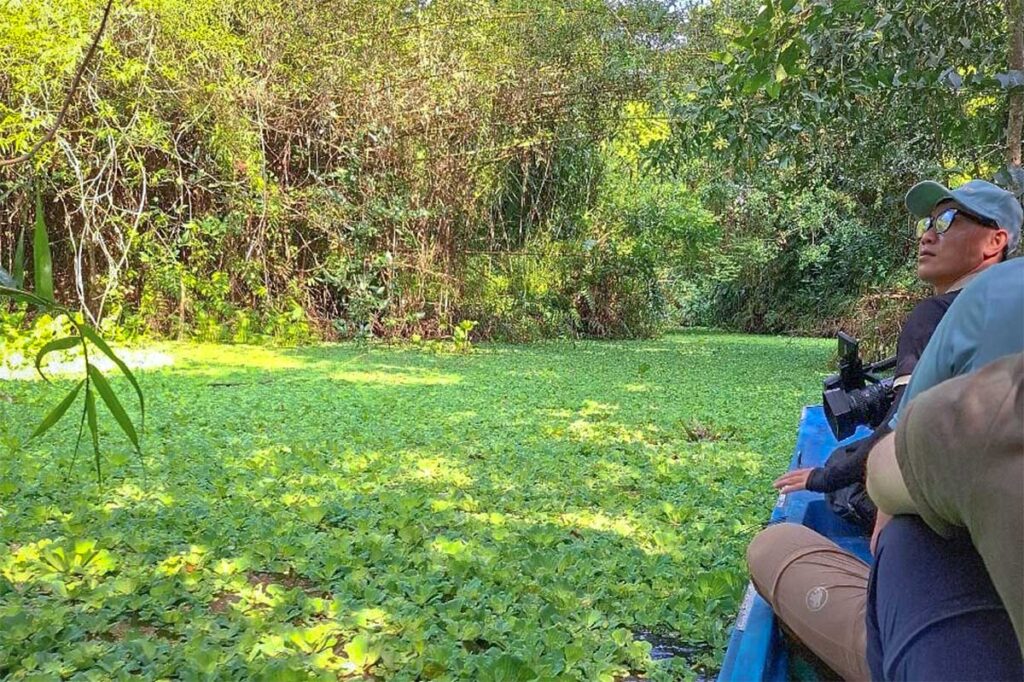
Lung Ngoc Hoang changes its look with the seasons. During the rainy months, the canals are blanketed with water plants, giving a striking emerald appearance. In the dry season, the waterways are more open, which highlights the reflections of the tall melaleuca trees. After rain, the reserve often has a misty, moody atmosphere that photographers will appreciate.
5. Low tourist density and peaceful atmosphere
One of the reserve’s biggest advantages is its relative lack of crowds. Compared to more famous wetlands like Tra Su, Lung Ngoc Hoang feels quieter and less staged for tourism. This makes it appealing if you prefer unhurried exploration and the sound of birds over loud boat engines. That said, don’t expect extensive services or interpretation — the simplicity is part of what keeps it peaceful.
Best time to visit Lung Ngoc Hoang Nature Reserve
Why timing matters
Lung Ngoc Hoang is a wetland reserve, which means its character shifts with the seasons. Water levels rise and fall, aquatic plants spread or recede, and bird activity changes depending on the availability of food. When you visit can make a real difference to what you see and how the place feels — from vibrant, water-covered canals to quieter dry-season forests.
By season (overview)
- Rainy/flooded season (approx. August–November): This is when the canals are at their most photogenic, with duckweed and water lettuce carpeting the water. Birdlife is generally more active, and the reserve feels lush and alive. On the flip side, you should expect occasional showers and wetter conditions.
- Dry season (December–April): The logistics are simpler — easier boat rides, drier walks, and clearer views through the forest. The canals are more open, with fewer floating plants, giving the reserve a different but still attractive look.
Best months & time of day
If you’re aiming for the most dramatic landscapes and bird activity, late October to November is often considered the sweet spot, when floodwaters are high but the worst of the rains have passed. Regardless of the month, early mornings and late afternoons are the most rewarding times of day, offering cooler temperatures, softer light for photos, and more movement from the birds.
Visiting outside “prime” months
Not everyone can time their visit perfectly, and that’s fine. Outside the peak flooded period, Lung Ngoc Hoang is still worth visiting if you enjoy quiet natural settings. You may see fewer birds gathered in large flocks, and the canals may not have that bright green carpet, but the experience of being in a peaceful wetland — away from crowds — is still rewarding in its own way.
Location and How to get there
Where is Lung Ngoc Hoang?
Lung Ngoc Hoang Nature Reserve is located in Phuong Binh Commune, Phung Hiep District, Hau Giang Province. It sits about 40 km south of Can Tho, along rural roads that pass through small towns and farmland. The approach isn’t difficult, but expect a few turns near Kinh Cung where signage can be limited — offline maps are useful here.
Day trip from Can Tho (what it’s like)
Most visitors come as a day trip from Can Tho, with the journey taking around 1–1.5 hours by car. A typical visit includes a boat ride through the canals, a climb up the 21-meter observation tower, and sometimes a short forest walk. Many organized trips also add in a local village stop, such as watching bamboo basket weaving, tasting seasonal fruits, or seeing rice fields along the way. The whole outing usually feels relaxed rather than rushed, with enough time to enjoy the reserve without being an all-day expedition.
Travel by yourself (DIY)
It’s also possible to visit independently, though it comes with some trade-offs.
- Pros: You have full control over timing, can linger where you like, and it’s potentially cheaper if you go by motorbike or arrange a private car with driver.
- Cons: Signage is limited, English is rarely spoken on site, and you may struggle to find the right boat dock or get much context about the wildlife. Without a guide, it’s more of a scenic outing than an educational one.
Tips: Bring offline maps, carry cash for tickets and boat fees, and be prepared for a bit of improvisation when arranging the visit on arrival. If you enjoy that sense of adventure, DIY is rewarding — but if you prefer structure and local knowledge, a tour from Can Tho is the easier choice.
Practical visiting information & tips
Entrance & boat fees, hours
There’s a small entrance fee, and the boat ride is usually an additional cost. Prices are modest by international standards, but bring cash since card payment isn’t accepted. The reserve is open daily, though exact hours aren’t always clearly posted. Aim for mornings or late afternoons — not only is the light better, but it’s cooler and birds are more active.
What to wear / bring
This is a wetland forest, so dress for comfort and practicality. Light long sleeves and pants help against sun and mosquitoes, and a hat and sunscreen are useful in the open areas. Bring insect repellent, a refillable water bottle, and if you’re visiting in the rainy months, a poncho or rain jacket. Keen birders should pack binoculars — you’ll get much more out of the visit.
On-site facilities & access
Facilities are basic. There may be a small ticket office and simple seating areas, but don’t expect cafés, souvenir shops, or detailed information boards. English is rarely spoken, so a phrasebook or translation app (preferably offline) helps. Mobile signal is patchy, and Wi-Fi isn’t reliable. The observation tower has steps that are manageable but not suitable for those with mobility issues. The reserve overall isn’t wheelchair-friendly.
Safety & etiquette
- Always wear lifejackets when provided on boats.
- Keep a respectful distance from wildlife, especially birds and bee hives.
- Don’t litter or pick plants — the reserve is fragile and under pressure.
- Keep voices low when birdwatching; the quieter you are, the more you’ll see and hear.
How to combine your visit with other sights
Same-day pairings from Can Tho
Since Lung Ngoc Hoang is only about an hour to ninety minutes from Can Tho, it works well as part of a half- or full-day trip. Many itineraries include a cultural stop to balance out the nature experience:
- Bamboo or rattan craft village – see basket weaving and other traditional skills.
- Small countryside stops – such as a rice noodle workshop or cacao farm, both common in the Can Tho area.
- Nearby cultural sites – like a Khmer pagoda or the famous Gian Gua giant tree, which is often included on the same route.
This mix of nature and local culture makes the day more varied, especially if you’re short on time in the Mekong Delta.
Broader Mekong Delta itinerary ideas
If you’re on a longer trip through the region, Lung Ngoc Hoang can be one stop in a wider loop:
- Hau Giang – explore countryside markets and quieter rural life that rarely sees tourists.
- Soc Trang – known for its impressive Khmer temples, including the Bat Pagoda and Clay Pagoda.
- Dong Thap – for larger reserves like Tram Chim, especially if you’re focused on birdwatching.
- Bac Lieu and Ca Mau – head further south to visit bird sanctuaries, mangrove forests, or even reach Cape Ca Mau, the southernmost tip of Vietnam.
By linking Lung Ngoc Hoang with other Delta destinations, you’ll get a better sense of both the natural diversity and cultural richness of the region.
Is Lung Ngoc Hoang Nature Reserve worth visiting?
Lung Ngoc Hoang is worth considering if you enjoy quiet wetlands, slow boat rides, and birdwatching without crowds. It offers a more authentic, low-key alternative to the busier reserves in the Mekong Delta, and the combination of emerald canals and the 21-meter bird tower makes for a pleasant few hours in nature.
On the other hand, it’s not the right choice if you expect polished infrastructure or dramatic wildlife spectacles. Facilities are minimal, English is limited, and what you see depends heavily on the season and even the time of day. In the dry months, for example, the waterways look less lush, and you might spot fewer birds.
If you go in with realistic expectations, Lung Ngoc Hoang can be a rewarding visit — especially for travelers who prefer peaceful landscapes over tourist-heavy attractions. The tower and boat canals are the clear highlights, and taken together, they provide a good snapshot of the Mekong’s wetland ecosystems.
